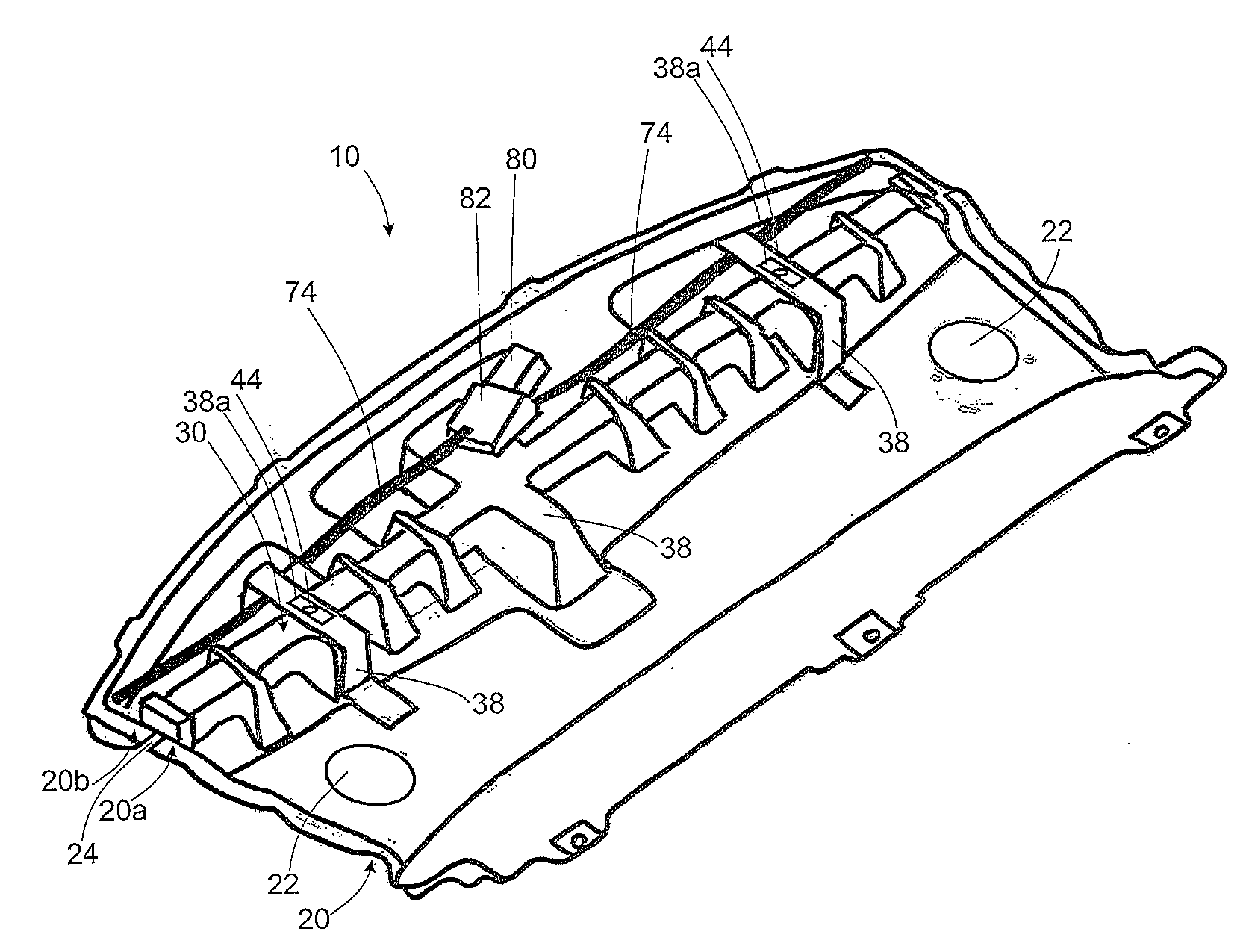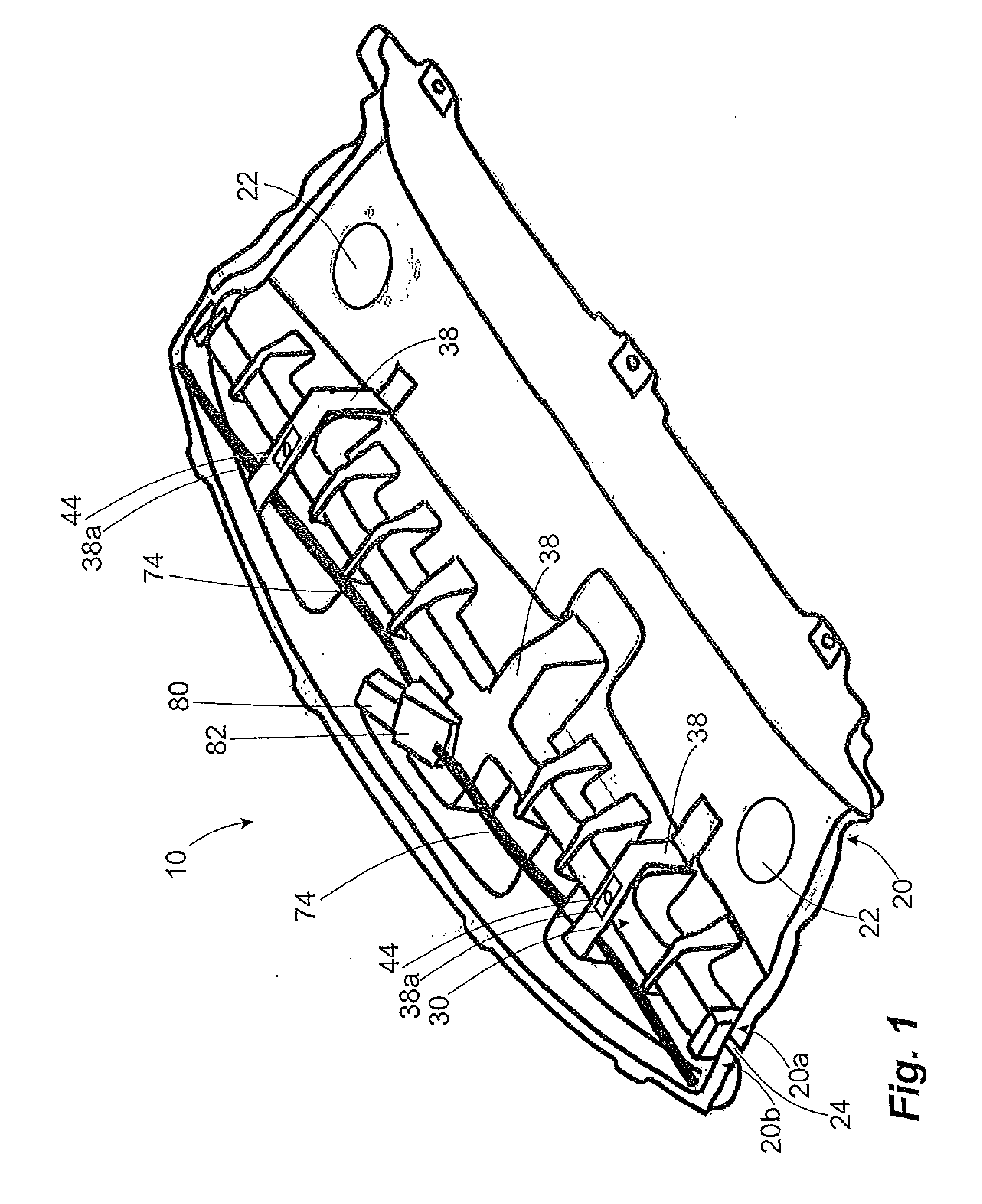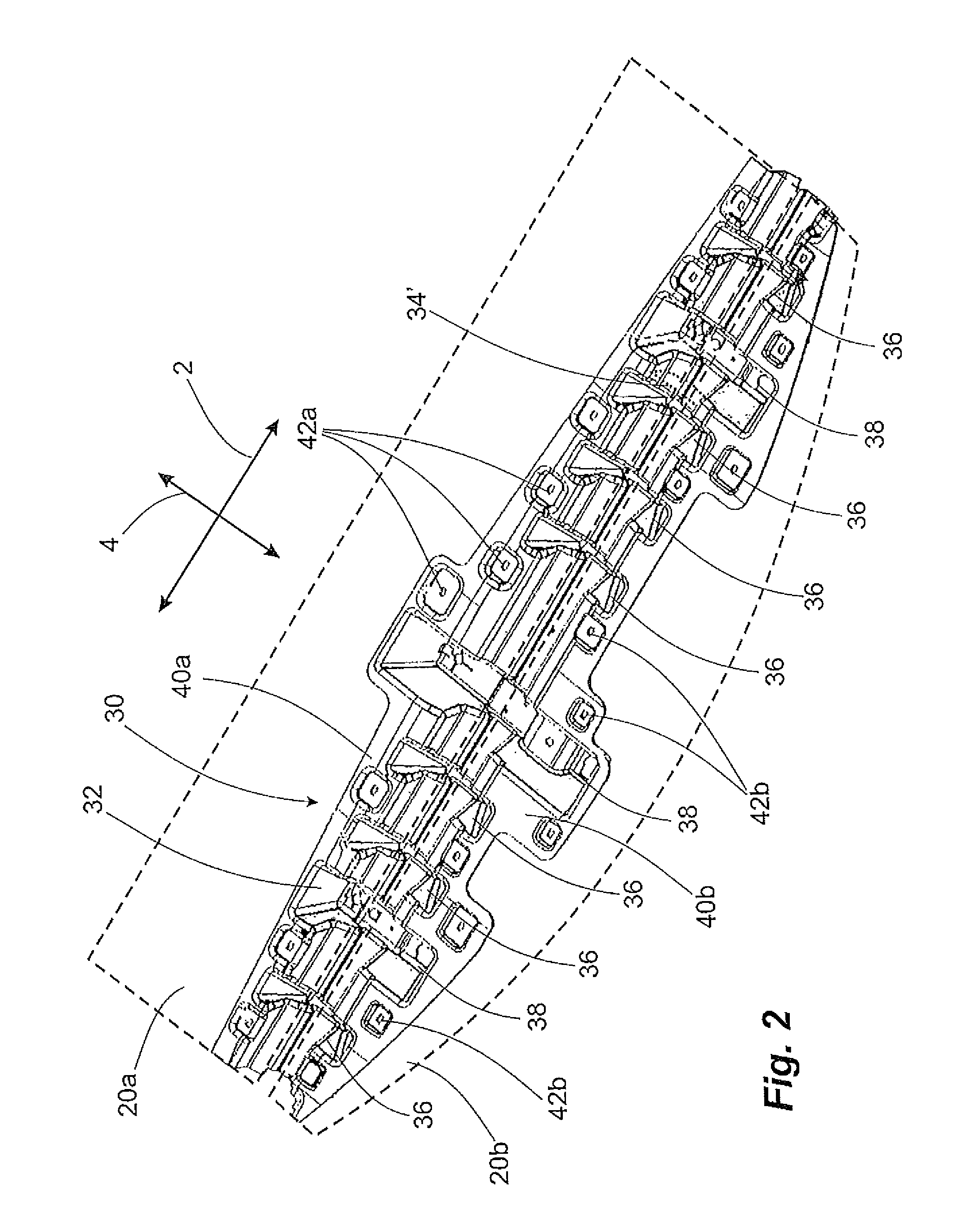Rear window roller blind system
a roller blind and rear window technology, applied in the field of roller blind systems, can solve the problems of insufficient rigidity of the connection of the clasp to the shelf portion, difficult assembly, etc., and achieve the effects of simple production, high degree of stability, and high degree of stability
- Summary
- Abstract
- Description
- Claims
- Application Information
AI Technical Summary
Benefits of technology
Problems solved by technology
Method used
Image
Examples
Embodiment Construction
[0028]FIG. 1 shows an exemplary embodiment of a roller blind system according to the invention. This can be seen in FIG. 1 as a perspective view from below.
[0029]The roller blind system 10 has a substantially rigid shelf 20, which comprises two shelf portions 20a, 20b which are rigid per se and which are produced as separate components. They form by means of the upper side thereof which cannot be seen in FIG. 1 the parcel shelf of a vehicle, which is arranged behind the rear seats of the vehicle. They may further perform other functions. In the illustrated exemplary embodiment, for instance, the front shelf portion 20a is also the carrier of loudspeakers of an audio system and has to this end recesses 22 for loudspeakers.
[0030]The two shelf portions 20a, 20b are not directly connected to each other since the slot 24 provided therebetween acts as a through-slot for a flexible surface structure 54 of the roller blind system 10. Therefore, the connection of the two shelf portions 20a, ...
PUM
| Property | Measurement | Unit |
|---|---|---|
| flexible | aaaaa | aaaaa |
| surface structure | aaaaa | aaaaa |
| surface area | aaaaa | aaaaa |
Abstract
Description
Claims
Application Information
 Login to View More
Login to View More - R&D
- Intellectual Property
- Life Sciences
- Materials
- Tech Scout
- Unparalleled Data Quality
- Higher Quality Content
- 60% Fewer Hallucinations
Browse by: Latest US Patents, China's latest patents, Technical Efficacy Thesaurus, Application Domain, Technology Topic, Popular Technical Reports.
© 2025 PatSnap. All rights reserved.Legal|Privacy policy|Modern Slavery Act Transparency Statement|Sitemap|About US| Contact US: help@patsnap.com



